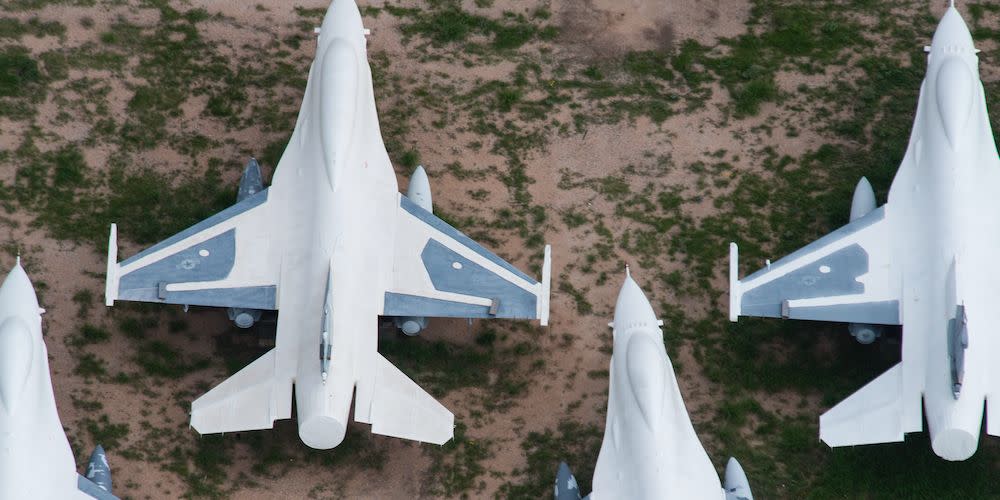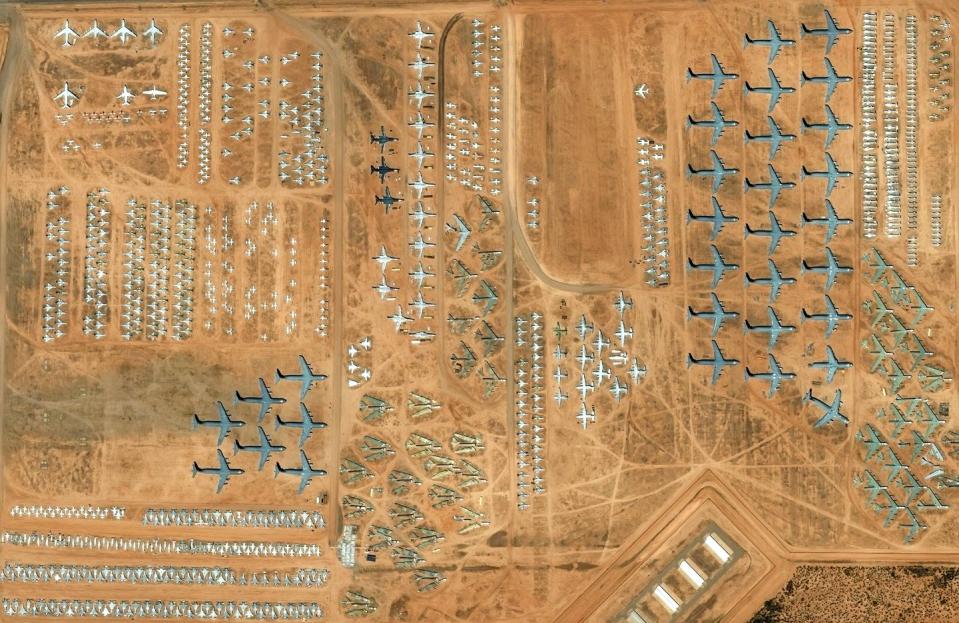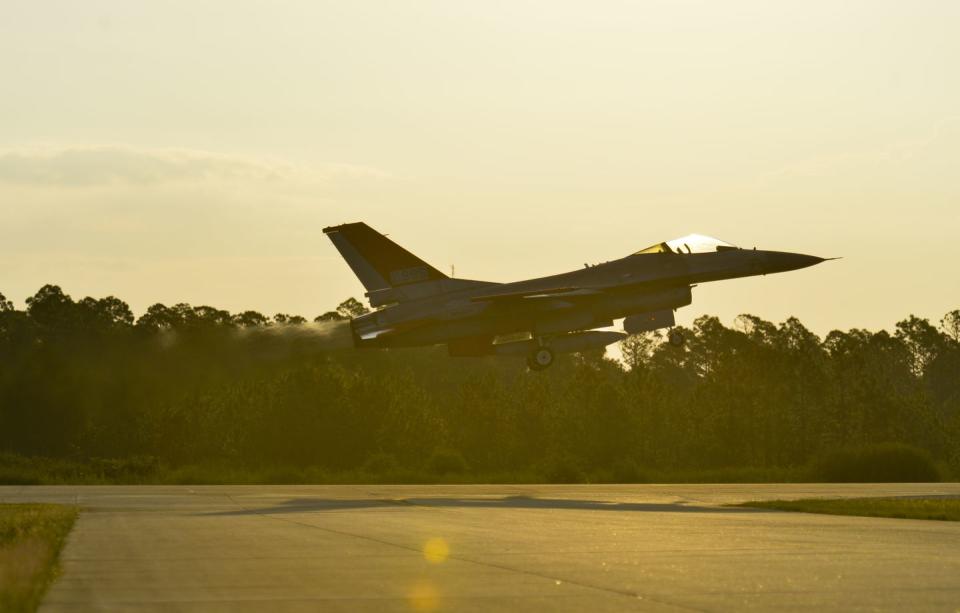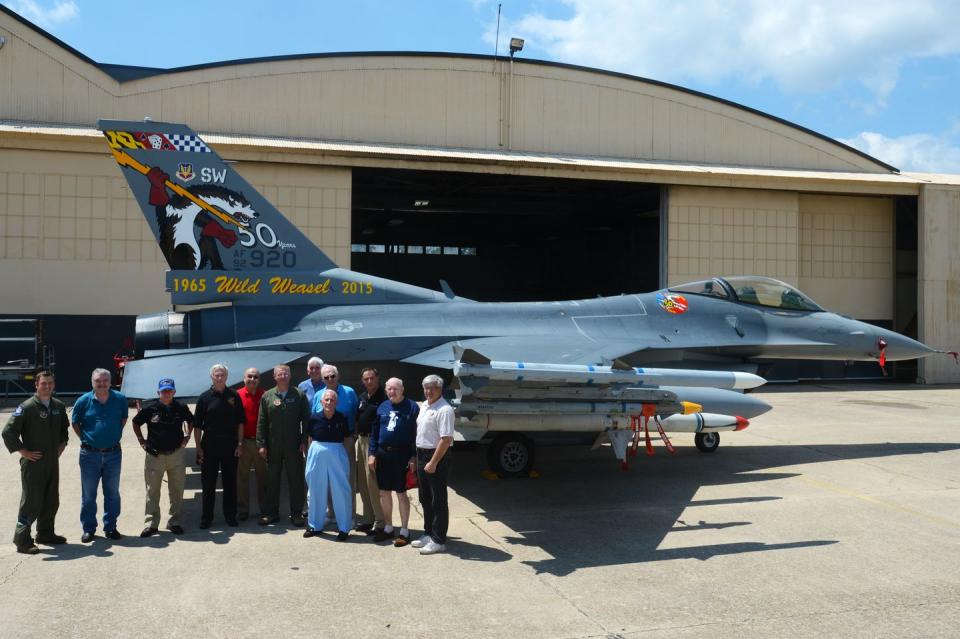Reviving Old Aircraft Could Help the U.S. Raise an Army of ‘Undead’ Drones

The U.S. Air Force has thousands of aircraft, including recently deactivated fighters, in mothballs.
A new proposal from war analyst Zachary Kallenborn would see them reactivated and refitted for combat duty as armed drones among other special mission uses.
The revamped “undead” planes would allow the Air Force’s overall fleet to grow, boosting the number of planes capable of combat.
The U.S. Air Force might be sitting on the key to expanding its inventory of fighter jets without even knowing it. Older planes, like the F-16 Fighting Falcon, could be brought back to life as uncrewed drones, among other combat weapons. The drones—what war analyst Zachary Kallenborn calls “undead aircraft” in a recent article for War on the Rocks—could be an inexpensive, expendable solution to the problem of rising aircraft costs. Undead aircraft could take on assignments too dangerous for crewed aircraft, flying one last mission before a permanent retirement.
This concept, which Kallenborn cheekily terms “necro-aeronautics,” would see planes brought out of retirement from aircraft graveyards, such as the 309th Aerospace Maintenance and Regeneration Group, or AMARG, at Davis-Monthan Air Force Base in Tucson, Arizona. There, in an area known as “the Boneyard,” thousands of ex-Air Force, Navy, and Marine Corps planes are parked in neat rows in the Arizona desert, where low humidity slows decay. Many are also shrink-wrapped in plastic and maintained.

Aircraft sent to the Boneyard are typically retired after something better comes along; F-16s at the base have been replaced by newer F-16s, or even F-35As. For most planes, it’s a sunny retirement until the Air Force decides to send them to the scrapper. On very rare occasions, a service will reactivate planes, as was the case for the B-52 Stratofortress bombers “Wise Guy” and “Ghost Rider.”
Many of the planes in the Boneyard were in flyable condition, but have simply become obsolete. Some are considered no longer safe to fly, their airframes having reached the point of exhaustion. Others are cannibalized to keep active aircraft of the same family flying on active duty.
The Air Force already converts F-16s to QF-16s, the “Q” designation meaning “uncrewed.” QF-16s are used as target drones, mimicking high-performance enemy fighters, an opportunity for fighter pilots to use live missiles against a remote-controlled target. Kallenborn’s article goes a step further, considering what it would be like to actually arm an F-16 drone and send it into combat.
Undead aircraft, freed of the need to carry a pilot, can carry out a whole new level of dangerous missions. Kallenborn sees the possibility of robo-aircraft armed with missiles, bombs, and other munitions, or simply used as decoys. QF-16s could be armed with HARM anti-radiation missiles and then flown over enemy air defenses, automatically launching HARMs at any radar that dares to turn in its flight path. The concept would be extremely dangerous to an aircraft with a human pilot, but for an undead fighter, it’s just another mission flown.

Undead aircraft could even be loaded up with bombs and turned into giant cruise missiles. A drone bomb could then be flown against targets like the Crimean Bridge, an 11-mile-long bridge Russia built after it illegally annexed the Crimean peninsula from Ukraine. The bridge is currently a supply route for Russian forces attacking Ukraine, and its destruction would be a major setback in a war that has not gone at all as planned for Russia.
Kallenborn’s idea could be a low-effort, high-payoff endeavor. The Air Force and the other flying services already have the planes and the technology to convert them into unmanned platforms, including the ability to take off and land autonomously. The last remaining step would be to equip them with weapons and the ability to use them. Undead jets in most cases could be supplied with spare parts from the Boneyard, and 3D-printing scarce parts in time might also become an option.

Adding undead fighters to the Air Force could solve two of the Pentagon’s most pressing problems: one, the high cost of weapon systems, especially aircraft, which threatens to gradually shrink the service’s ability to bring a mass of planes to a future conflict; and two, removing risk to pilots.
If Kallenborn has his way, the Air Force of the future will fly a fleet of crewed fighters and bombers, new drones, and these undead fighters. He calls on the Pentagon to become a bureaucratic necromancer—to “raise its arms and bring forth a shambling mass of undead aircraft to overwhelm adversaries.” If that happens, America’s enemies could face their own zombie apocalypse.
You Might Also Like

 Yahoo Movies
Yahoo Movies 
